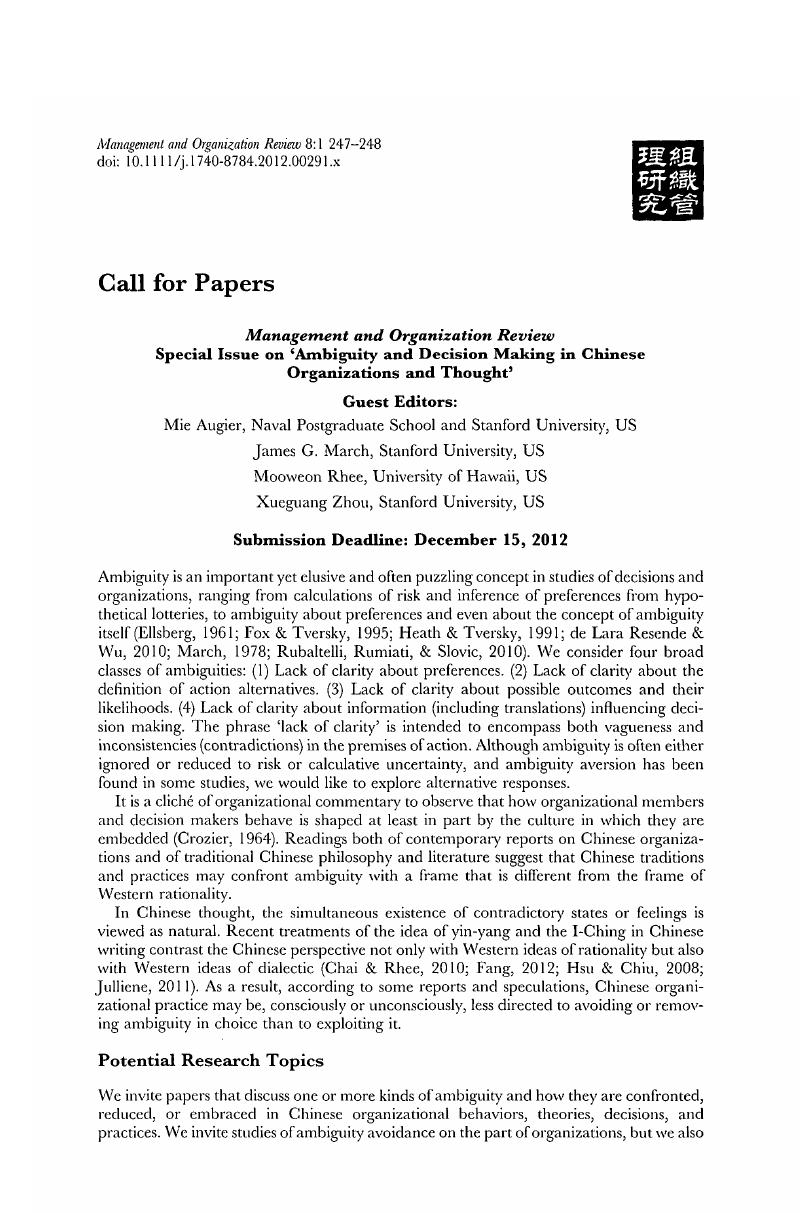Crossref Citations
This article has been cited by the following publications. This list is generated based on data provided by Crossref.
Rhee, Mooweon
and
Kim, Tohyun
2019.
Exploiting old lessons and exploring new ideas: A Confucian approach to exploitation and exploration.
Asia Pacific Journal of Management,
Vol. 36,
Issue. 3,
p.
773.
Sun, Xiuxia
Rong, Na
Sun, Mouxuan
and
Zhu, Fangwei
2023.
Combining Structural and Sequential Ambidexterity: A Configurational Approach Using fsQCA.
Management and Organization Review,
Vol. 19,
Issue. 4,
p.
803.





